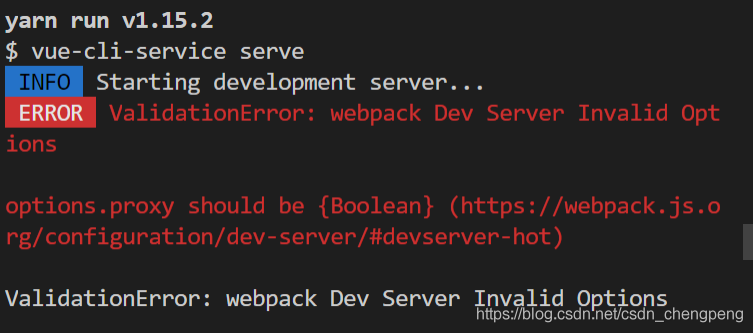

For example, your website may use your local packages to showcase the latest features, instead of depending on a released version your contributors can also conveniently update the docs as they implement features. Monorepos allow you to share dependencies between similar projects. If you are using Docusaurus for documentation of an existing project, a monorepo may be the solution for you.
YARN RUN DEV SERVER INSTALL
You can install and use any npm packages you like in them /package.json - A Docusaurus website is a React app.This is the equivalent of siteConfig.js in Docusaurus v1 / - A config file containing the site configuration.Any contents inside here will be copied into the root of the final build directory More details can be found in the pages guide /src/pages - Any files within this directory will be converted into a website page.You don't have to strictly put your non-documentation files in here but putting them under a centralized directory makes it easier to specify in case you need to do some sort of linting/processing /src/ - Non-documentation files like pages or custom React components.More details can be found in the docs guide Customize the order of the docs sidebar in sidebars.js. /docs/ - Contains the Markdown files for the docs.This allows us to bypass CORS issues that normally occur when requesting resources that live at a different domain. PROXYTARGET and PROXYDOMAIN tell our development server to proxy requests to Orthanc. More details can be found in the blog guide It will watch for changes and update as we develop. You can delete the directory if you do not want/need a blog. /blog/ - Contains the blog Markdown files.
yarn -cwdHere is what thatĬonfiguration looks like: window. If you would like to run a yarn command from another directory you can use cwd. platform/viewer/public/config/default.js. The APP_CONFIG value tells our app which file to load on to nfig. Requesting resources that live at a different domain. Your package.json should look similar to this: Save your package.json file and launch your Next.js. Find the line that says 'dev': 'next dev' and replace it with 'dev': 'next dev -p 3001'. If you want one of your Next.js projects to permanently run on a specific port, open your package.json file. This allows us to bypass CORS issues that normally occur when Change Next.js local server port permanently. PROXY_TARGET and PROXY_DOMAIN tell our development server to proxy requests

It will watch for changes and update as we develop. APP_CONFIG: config/docker_nginx-orthanc.js.cross-env sets three environment variables.Is: cross-env NODE_ENV=development PROXY_TARGET= /dicom-web PROXY_DOMAIN=http:/ /localhost:8042 APP_CONFIG=config/docker_nginx-orthanc.js webpack-dev-server -config. Is running the dev:orthanc script in our project's package.json. Let's take a look at what's going on under the hood here. # Run our dev command, but with the local orthanc configįor more configuration fun, check out the Yarn config set workspaces-experimental true # Restore dependencies This repository's root directory, and run: # If you haven't already, enable yarn workspaces Now that we have a local Orthanc instance up and running, we need to configure Orthanc for Docker in Orthanc's documentation. You can see the docker-compose.yml file this command runs at Click "Select files to upload." and select one or more DICOM files.In the top right corner, click "Upload".Start Orthanc: # Runs orthanc so long as window remains open Parameter in platform/viewer/package.json to or If you are using Docker Toolbox you need to change the PROXY_DOMAIN Firstly, I want to launch two command prompts which are running yarn run dev:client and yarn run dev:server respectively. The same goes for the npm run dev command. npm run serve is basically asking the package manager (npm) to run the command specified under the name serve in the package.json file. Not sure if you have docker installed already? Try running docker -version I want to write a powershell script that sets up a development environment. In this guide, you will understand the driving mechanisms behind the two commands npm run serve vs npm run dev in vuejs. with DCMTK's storescu or yourįor our purposes, we will be using Orthanc, but you can see a list of While the OHIF Viewer can work with any data source, the easiest to configureĪre the ones that follow the DICOMWeb spec. The time may come when you want to develop using your own data either locally orĪTTENTION! Already have a remote or local server? Skip to the You didn't add thisīy default, the viewer is configured to connect to a remote server hosted by the

OHIF Viewer has data for several studies and their images.


 0 kommentar(er)
0 kommentar(er)
